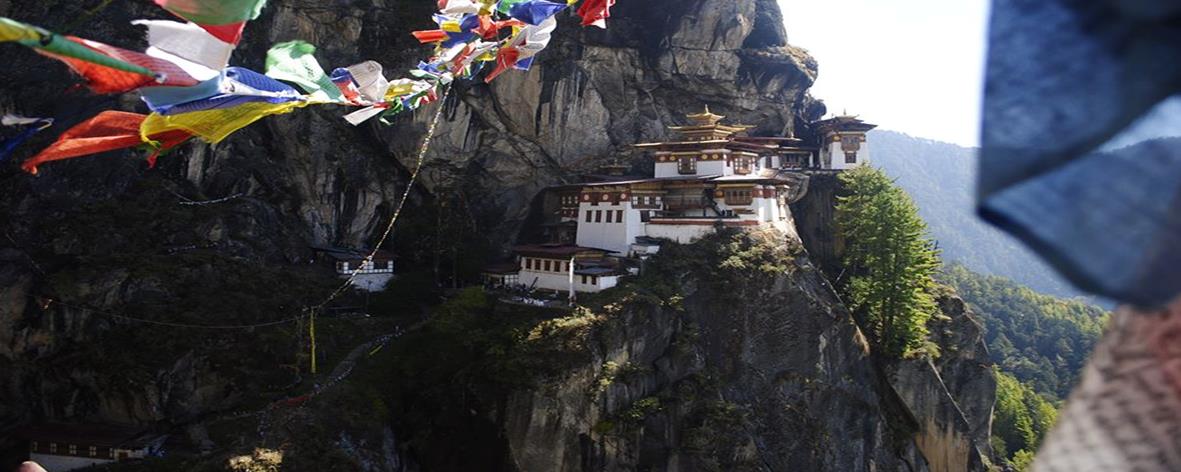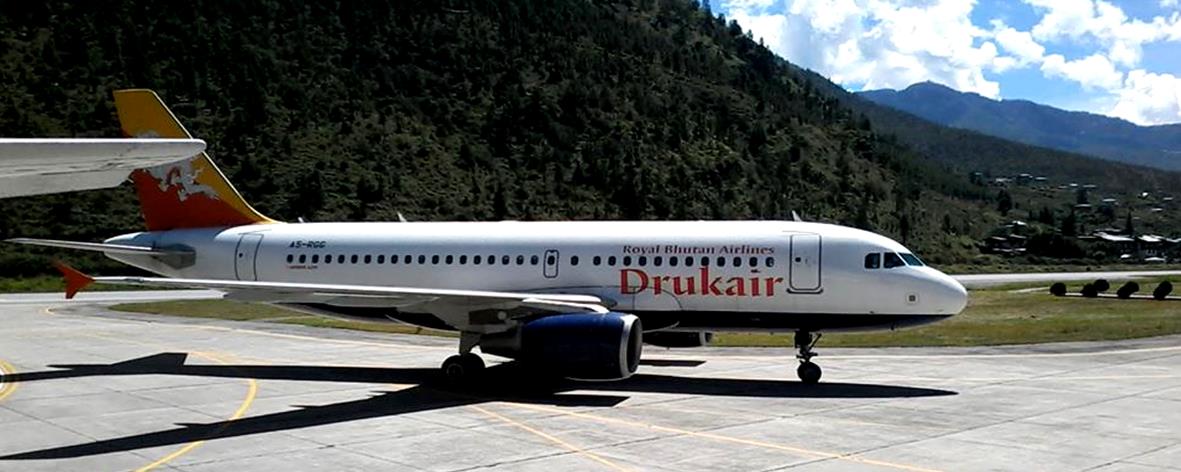7D6N WESTERN BHUTAN TOURS
Code:BT

INTRODUCTION:
The mystical Dragon Kingdom has still retained its unparallel natural beauty through timeless existence. Bhutan, which is a part of eastern Himalaya, unveils the giant Himalayan mountain fortress engulfed by pristine greenery, sectioned by rolling valleys and fertile dales. This tiny hidden Kingdom has been viewed as the Last Shangri-La, synonymous to the last paradise on Earth by multitude of folks from far and beyond. Additionally, the natural scenery, rich and vibrant cultural tradition, middle path developmental philosophy, “The Gross National Happiness” and well preserved national heritage are some of the prominent landmarks. Apparently, Bhutan has been pronounced as the “Living Museum” by virtue of its unspoiled culture and tradition in practice which in fact, most of the industrialized world have lost in pursuit of materialism. Therefore, visiting Bhutan once in a life time would be rewarding, educational and wish fulfilling. “Western Bhutan Conquest” highlights the essence of typical Bhutanese culture through self immersion with the different ethnics’ way of life, environmental exploration and fascinating cultural sightseeing. You will love every bit of Bhutanese spirit.
ITINERARY:
DAY 01: ARRIVAL IN PARO - THIMPHU
Arrival at Paro International Airport and drive to Thimphu, capital of Bhutan, which is a one-hour drive and located at 2,300m above the sea level. Work off the lunch by visiting the MEMORIAL CHORTEN, or include it on your arrival. The Chorten has great significance in the religious life of the town people and symbolizes, as do all such monuments, the different level of the Buddha’s mind and teaching. When ritually circumambulated clockwise, one gains merit for the next life and atones for present sins. If you are in Thimphu during week days, visit the TRADITIONAL BHUTANESE MEDICINE, a blend of Indian ayurvedic and Chinese herbal practices, is carried out at the indigenous Hospital. Visit PAINTING SCHOOL, children study a course in religious drawing and painting. There are also course in woodcarving and mask making. Further along the same road is the NATIONAL LIBRARY, built in 1969 and located in a new Bhutanese style building. The museum contain an important collection of foreign books on Bhutan, the Himalaya and the Buddhism, and a unique series of Bhutanese and Tibetan books and manuscripts imprinted with woodblocks.
DAY 02: THIMPHU SIGHTSEEING
Today your sightseeing begins with the visit to SIMTOKHA DZONG, originally called Simmo Dokha (Demon on the Stone)till the Zhabdrung cleansed and purified it and build the dzong whose complete name is SANGAY SABDON PHODRANG( The Palace of Profound Tantric Teaching).This was the first of the many dzongs constructed by Zhabdrung in 1631. Visit NATIONAL MEOMRIAL CHORTEN, It was built in 1974 in memory of the third King Jigme Dorji Wangchuk by his mother. Drive to visit CHANGANGKHA LHAKHANG, is one of the oldest temple in Thimphu, dating back to the fifteen century. It was built by a descendent of Lama Phajo Drugom Zhipo. The main statue here is that of Avaloketeswara and opposite the entrance is a large painting of Tsangpa Gyaray Yeshay Dorji. The place has an air of peace and tranquility, located as it is above and away from the city. TRASHICHHOE DZONG “The Fortress of Auspicious Religion”, Your last stop for the day. The Dzong can be visited only after 5 pm on week days, when the government office closed-or then during the day on Saturday/Sunday. The Trashichhoe Dzong, in its present incarnation, was consecrated as late as 1969 and this building is a visual delight. With its superb sense of proportion and space, it carries an aura of regal dignity. Its history dated back to the 13th century. After becoming the property of Zhabdrung in 1641 he rebuilt the dzong.
DAY 03: THIMPUH – PUNAKHA
Early morning drive takes you to DRUK WANGYEL CHORTEN “Chortens of the victory of the Druk Gyalpo” the top (dochula pass) is unlike that of any other pass you will encounter here or for that matter anywhere in the world! There are a 109 chortens in three tiers of 45,36 and 27 circumscribing a single large chorten. The building of this chortens was initiated by Queen Ashi Dorji Wangmo Wangchuk when her husband, the fourth king, travelled to the South-East of the country in December 2003 leading his army against insurgents from India. Beside these magnificent chortens in an amazing setting you will be able to sport some of the great Himalayan peaks . On the way visit CHIMI LHAKHANG, It is a pleasant 30-40 minute walk from the road head, through cultivated fields and up a gentle slop. This lhakhang dates back to 1499 and was built by Lama Drukpa Kinley, when he visited this valley. Lama Drukpa Kinley is believed to have subdued the demoness residing at Dochu La with his ‘magic thunderbolt of wisdom’ and a wooden effigy of this is preserved within. PUNAKHA DZONG, The dzong straddles the confluence of two rivers and resembles a giant battleship. Its full name is ‘Pungthang Dechen Phodrang’ or ‘Palace of Great Happiness.’ This extremely impressive fortress was built as far back as 1937. It was the second of the mighty dzong built by Zhabdrung and was the seat of government till the end of the reign of the second king.
DAY 04: PUNAKHA – BUMTHANG
Early breakfast in hotel and drive to Bumthang en route Shar valley and Chelela pass. Then drive to the valley of Shar including the Chendibji valley of historical significance. CHENDEBJI CHORTEN, en route to Trongsa is the Chendebji Chorten, patterned on Katmandu’s Swayambhunath Stupa, with eyes painted on the four cardinal point. It was built in the 18th century by Lama Zhida, to cover the remains of an evil spirit that was subdued at this spot. Legends says that the evil spirit manifested as a gigantic snake. Reaching Trongsa visit TRONGSA DZONG, built in1648, it was the seat of power over central and eastern Bhutan. Both the first and the second Kings of Bhutan ruled the country from this ancient seat. All 5 Kings were invested as Trongsa Penlop “governor” prior to ascending the throne. The dzong is the massive structure with many levels, sloping down the contours of the ridge on which it is built. Because of the dzong’s highly strategic position, on the only connecting route between east and west, the Trongsa Penlop was able to control effectively the whole of the Eastern and Central regions of the country. TA DZONG, this watchtower, which once guarded Trongsa Dzong from internal rebellion, stands on a promontory above the town. It was built by Chhoje Minjur Tempa, the first governor of Trongsa in 1652. It has four observation pints resembling Tiger, Lion, Garuda, and Dragon. Climb up the path to visit Ta Dzong which now houses a shrine dedicated to the epic hero, King Gesar of Ling. A visit to this former watchtower provides visitors with an insight into the significant of Trongsa in Bhutan’s history. As of date the Ta Dzong of Trongsa is the most fascinating museum of the country. Drive to Bumthang en en route Youtongla pass. On the way to Chamkhar, visit CHUMMY YATHRA CENTRE where one can observe the process of yathra production, from pure wool of sheep and yaks.
DAY 05: BUMTHANG SIGHTSEEING
Breakfast in hotel visit JAKAR DZONG or “Castle of the White Bird” dominates the Chamkhar valley and overlooks the town. Constructed in 1549, by the Tibetan lama Nagi Wangchuk . The dzong plays an important role as the fortress of defense of the whole eastern districts. It also became the seat of the first King of Bhutan. A special feature of the dzong is the approximately fifty meter high Utse or Central Tower, which is distinct from all the dzongs in Bhutan. The other unique feature of the dzong is that of a sheltered passage, with two parallel walls, interconnected by fortified towers, which gave the population of the fortress access to water in the case of a siege. The protected water supply is still intact to this day. JAMBAY LHAKHANG, this monastery was built in the 7th century by the Tibetan King, Songtsen Gompo. It is one of 108 monasteries which he built to subdue the giant ogress who tried to demolish Buddhism in Tibet. Its present architectural appearance dates from the early 20th century. KURJE LAKHANG, located further along the valley, Kurje Lhakhang compresses three temples. The one on the right was built in 1652 against the rock face, where Guru Rinpochhe meditated in the 8th century. The middle temple was built on the site of a cave containing with the rock imprint of Gurus body, and is therefore, considered to be the most holy . The temple on the left was built by the Queen Mother, Ashi Kesang Choden in 1990. This three temples are surrounded by 108 chorten walls. TAMSHING LAKHANG, located across the river from Kurje Lhakhang, this temple was founded in 1501, a Terton(treasure revealer) Pema Lingpa, who was the re-incarnation of Guru Rinpochhe There are very old religious painting around the inner wall, which was restored at the end of the 19th century. This temple can be approached from Kurji Lhakhang with a short walk crossing through the suspension bridge. THANGBI GOMPA, this temple can be approached with 30 minute walk from Kurje Lhakhang, situated in the middle of a wide fertile plateau overlooking the river. Founded in 1470, by Shamar Rinpochhe of the Karma Kagupa religious school. The building compresses two sanctuary and a temple of terrifying deity. The sanctuary on the ground floor contains the statue of the past , present , and the future Buddha and three clay statues probably dating to the end of the 15th century. On the upper floor, the vestibule contains two remarkable paintings of Guru Rinpochhe’s heaven and the Buddha Amitabha’s heaven.
DAY 06: BUMTHANG – PARO
After your early breakfast in the hotel drive to Paro. Lunch would be served en route at one of the famous restaurant in Trongsa town. En route at Wangduephodrang take a short break for tea / coffee and then proceed to Paro. On arrival at Paro, check into the hotel.
DAY 07: PARO SIGHTSEEING
It is now time to embark on your somewhat arduous adventure for the day ascending the 3000 ft cliff reach the most spectacularly located Gompa in all of Bhutan (TIGER’S NEST). According to the legend Guru Padmasambhava visited the site in 8th century flying from the East of the country on the back of a tigress( a form that one of his consorts is believed to have taken). He meditated for three months in the cave here and then domining his terrifying form of Dorli Droloe subjugiated the evil spirits. Following him many permanent saints came here to meditate; notably Milarepa, Labdoenma and Thongtong Gyalpo. Today, Taktsang is more a holy place in the country.
DAY 08: BOARD YOUR FLIGHT BACK HOME

Departure home from Paro International Airport.
END OF TOURS
PRICE PER PERSON IN MYR (GROUND ONLY)
| MINIMUM PERSON | PRICE PER PERSON IN MYR |
| 4 PERSONS | 5200 |
COST INCLUDED:
- Sightseeing seeing as per the itinerary
- All meals during the tour
- Accommodation in 3 star/Luxury hotels
- Private foreign vehicle
- Experience tour Executive
- Entrance fees to various museums and parks
- Government Royalty of USD65(per person per night halt)
- One time refreshment on Arrival
- One time cultural program for a group exceeding 8 and above
- One mineral water bottle each a day
COST EXCLUDED:
- Drinks
- Tipping to guides and drivers
- Porters and other expenses of personal nature such as phone, laundry etc.
- Extra expenses or loss due to nature and unforeseen events beyond the control of our management.
FURTHER INQUIRY ABOUT PRICING AND MINIMUM PERSON FOR TOUR:
EMAIL TO: This email address is being protected from spambots. You need JavaScript enabled to view it.
Note: Please refer to the General term and Condition of Tour
